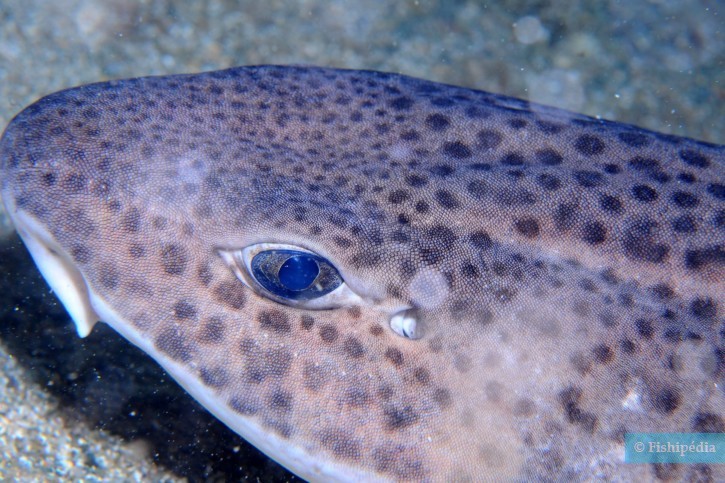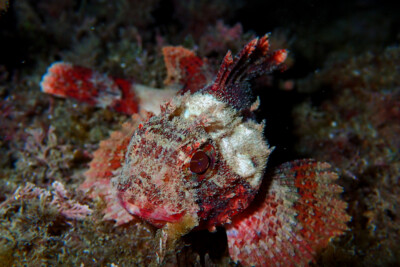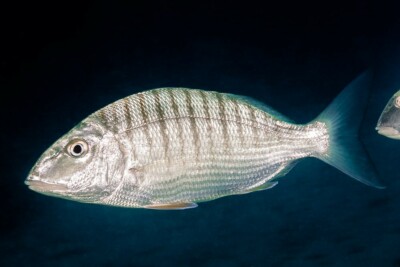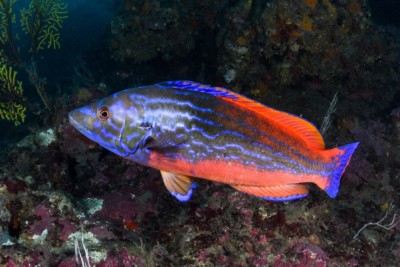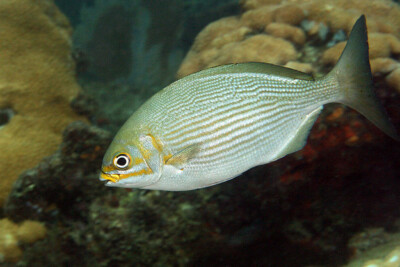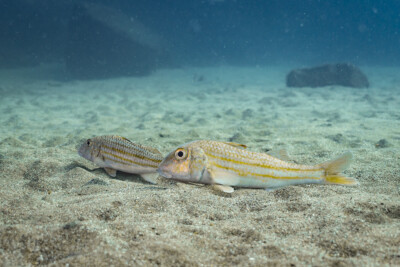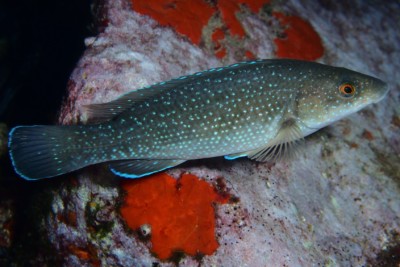nursehound
| Scientific name | Scyliorhinus stellaris |
|---|---|
| Descriptor | Linnaeus |
| Year of description | 1758 |
| IUCN category (World) | VU |
| Family | Scyliorhinidae |
| Genus | Scyliorhinus |
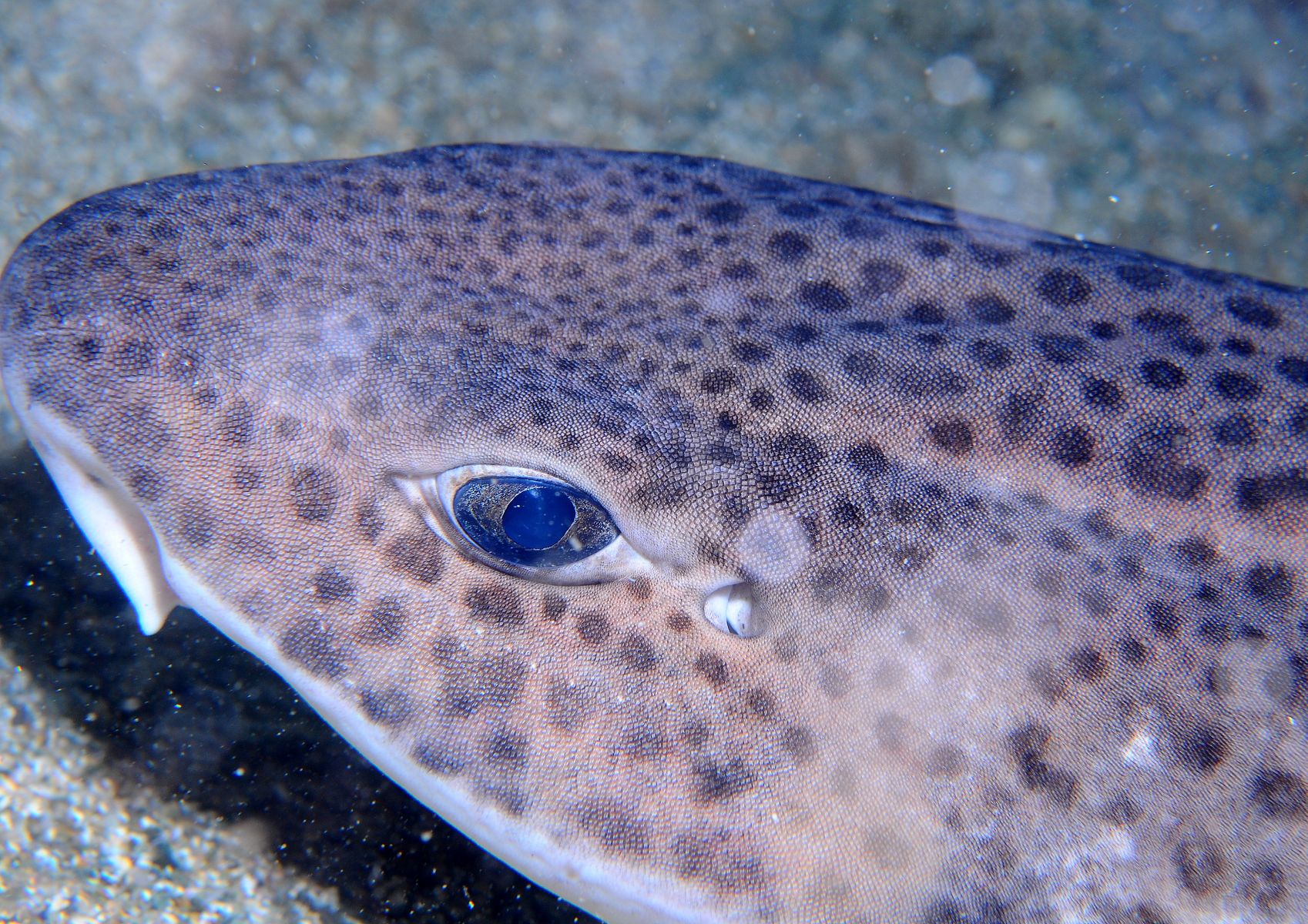

Introduction
The nursehound is a common shark found in the Eastern cold Atlantic zone, as well as in the English Channel, North Sea, and the Mediterranean Sea.
Who is it?
Morphology
-
Type
-
Average size100 cm
-
Maximum size200 cm
-
Longevity19 year
-
ShapeRectangular
-
Patternponctuations
-
Type
-
Average size100 cm
-
Maximum size200 cm
-
Longevity19 year
-
ShapeRectangular
-
Patternponctuations
How to recognize This fish ?
This fish has the particularity to possess several pairs of barbels, which allow him to search the bottom and to detect the food thus moved.
This elongated species is beige to brown in color with small and medium black spots. The eyes are almond-shaped, with a slit pupil. This characteristic gives it the common English name of "catshark": nursehound.
Darker spots are observed on its back. The belly is lighter than the back. The snout is short and rounded with a mouth located ventrally.
The fins are of medium size, the tail is heterocercal, and there are two dorsal fins. The first is at the same level as the pelvic fins, and the second at the level of the anal fin.
Although this species can reach 2 meters, its average size is one meter.
Sexual dimorphism
As with all sharks, males have claspers. These are a modification of the pelvic fins that allow the transmission of sperm to the female's cloaca.
Behaviour & Life cycle
-
dietcarnivorous
-
Sociabilitysolitary
-
territorialNo
-
Way of livingnocturnal
This peaceful nocturnal shark frequents the continental shelf from the surface to 125 meters deep. It is believed that this species can be found at depths of up to 200 meters. The nursehound feeds on mollusks and crustaceans, which it hunts on the hard bottom during the night.
Reproduction
-
Reproductionovipare qui pond sur substrat découvert
Oviparous, the nursehound lays up to a hundred eggs per year. Sexual maturity is reached at a size of 80 centimeters. The egg, which can measure 12 centimeters in length by 4 centimeters in width, is enclosed in a keratin capsule. The capsule is extended at its four corners with a twisted structure that allows it to attach to a support. The female circles around elements such as a rock, coral, or algae, to secure the capsule. After an incubation period ranging from 4 to 9 months depending on the temperature, the young hatch at a size of 16 centimeters.
Harmless species
Although listed among dangerous species, the nursehound poses no threat to humans.
Origin and distribution

Geographic distribution & Conservation
The nursehound, valued for its flesh, is a species that experiences significant fishing pressure. Although there are no size limits for capture, and the species is nearly threatened (according to IUCN), it is preferable to release any individual under 80 centimeters in order to allow it to reproduce.
État des stocks et pêche durable avec Ethic Ocean
Knowledge about shark populations and their exploitation is imprecise. However, several indicators (decrease in catches, decrease in yields) paint a rather bleak picture of the state of their stocks, even though situations vary from one species to another... Learn more
Conservation status of populations (IUCN)
What is its habitat?
Natural environment characteristics
-
Depth1 - 400 m
Biotope presentation
The nursehound lives on various bottoms between 1 and 200 meters deep. Being a nocturnal species, it is most often found resting on sand, mud, or in algae during the day.
Species of the same biotope
Fishkeeping
Not recommended
We do not recommend keeping this species in an aquarium. It has unpredictable needs which, if not met, generate significant stress, potentially leading to a shorter life expectancy, an interruption of its growth or the development of pathogens.
To go further
Sources & Contributions
Participation & Validation
The Fishipedia team and specialist contributors are committed to providing high-quality content. However, although the information comes from scientific sources or testimonials from specialists, the cards may contain inaccuracies.

Adrien Falzon

Benoit Chartrer

Silvia Gomez
Translation
Translation done with the valuable contribution of our translators, who make this information available to a wider audience. We sincerely thank them for their commitment.
Bibliographic references
Contribution to the study of the morphology of theteeth of the nursehound Scyliorhinus stellaris(Chondrichthyes: Scyliorhinidae) - A. SOLDO - J. DULCˇIC ́ - P. CETINIC ́ - Scientia marina - 2000.
Diet- and tissue-specific incorporation of isotopes in the shark Scyliorhinus stellaris, a North Sea mesopredator - Stephane Caut - Michael J. Jowers - Loïc Michel - Gilles Lepoint - Aaron T. Fisk - 2nd Symposium on Mediterranean Groupers - 2013.
refuging behaviour in the nursehound scyliorhinus stellaris (chondrichthyes: elasmobranchii): preliminary evidence from acoustic telemetry - d.w. sims - e.j. southall - v.j. wearmouth - n. hutchinson - g.c. budd - d. morritt - Cambridge University Press - 2005.
Scientific partners
Tags
Same genus
Species of the same biotope
